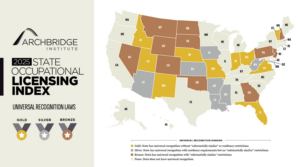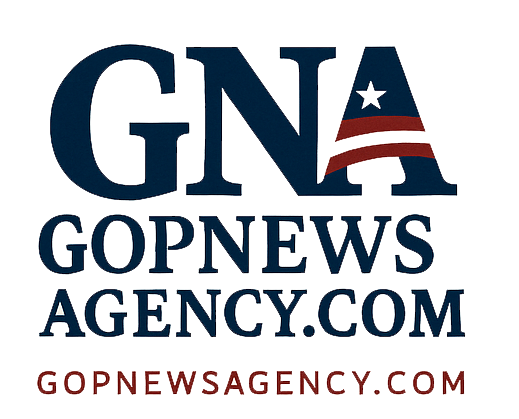A recent post on substack authored by Dr. Ed Timmons caught our eye. This particular post highlighted rankings of universal recognition laws for occupational licenses around the country, and Nebraska met the “Gold Standard” as can be seen from the image below.

This image is just one of many to be found in the most recent version of the Archbridge Institute’s State Occupational Licensing Index. Digging into the 2025 index, and comparing it to the 2024 and 2023 indexes (2023 was the first year), it’s clear to see that Nebraska’s position nationwide has improved as a state that is comparatively more friendly to workers than it was just a few years ago.
For those who might be interested in taking a closer look at the index, but who are old enough to remember when “We’re #1” meant you were the best, let’s define Archbridge’s measures. 1 = most occupational licensing/most barriers to work, whereas 5 = least occupational licensing/least barriers to work. When comparing ourselves to the states, 1-51 (including DC), 1 means the state has the most barriers (Oregon), where 51 means the state has the fewest barriers (Kansas).
Universal Recognition, where the state recognizes licenses from outside of the state for purposes of licensure in our state, is one element of the index, but the number of occupations that require state licenses, as well as the barrier level (training and testing requirements, for instance) to qualify for licensure, are factored in as well.
In the 2023 version of the index, Nebraska sat in the 3rd quintile in the index with a nationwide ranking of 22nd (remember, 22nd would mean that we’re 22nd worst, among the 50 +1 states). In the West North Central Region, made of the two Dakotas, Nebraska, Kansas, Minnesota, Iowa and Missouri, we had the 3rd highest number of barriers.
By the time the 2024 index came out, our efforts to improve our occupational licensing framework–through reviews and elimination of some licenses, holding the line on new regulations, and passage of LB16’s Universal Recognition–resulted in significant improvement. We moved into the 4th quintile with a nationwide ranking of 32nd. In our region, we dropped to 4th highest number of barriers.
Finally, in the most recent index, while we remained in the 4th quintile, our overall ranking dropped three more spots, to 35th in terms of high barriers, remaining 4th in our region, but getting closer to favorable comparison with our “best” neighbors (Missouri is ranked 50, Kansas 51).
Ratings such as these do not, of course, tell the whole story of that which they’re measuring. But they do provide a snapshot that policy makers and policy organizations look like. It seems to be human nature that we compare ourselves to others–especially those who are similarly situated to us. And most of us are competitive enough to wish that we were always number one, or at least in the top 10.
These ratings aren’t static. Other states are looking at where they stand, and trying to figure out how to improve their scores, just as we are, so improvements in the ratings during a time that occupational licensing is recognized as an important policy area is something to be celebrated, but it also means that we want to be careful about declaring victory and saying “my work here is done”–because that victory may be short-lived.










